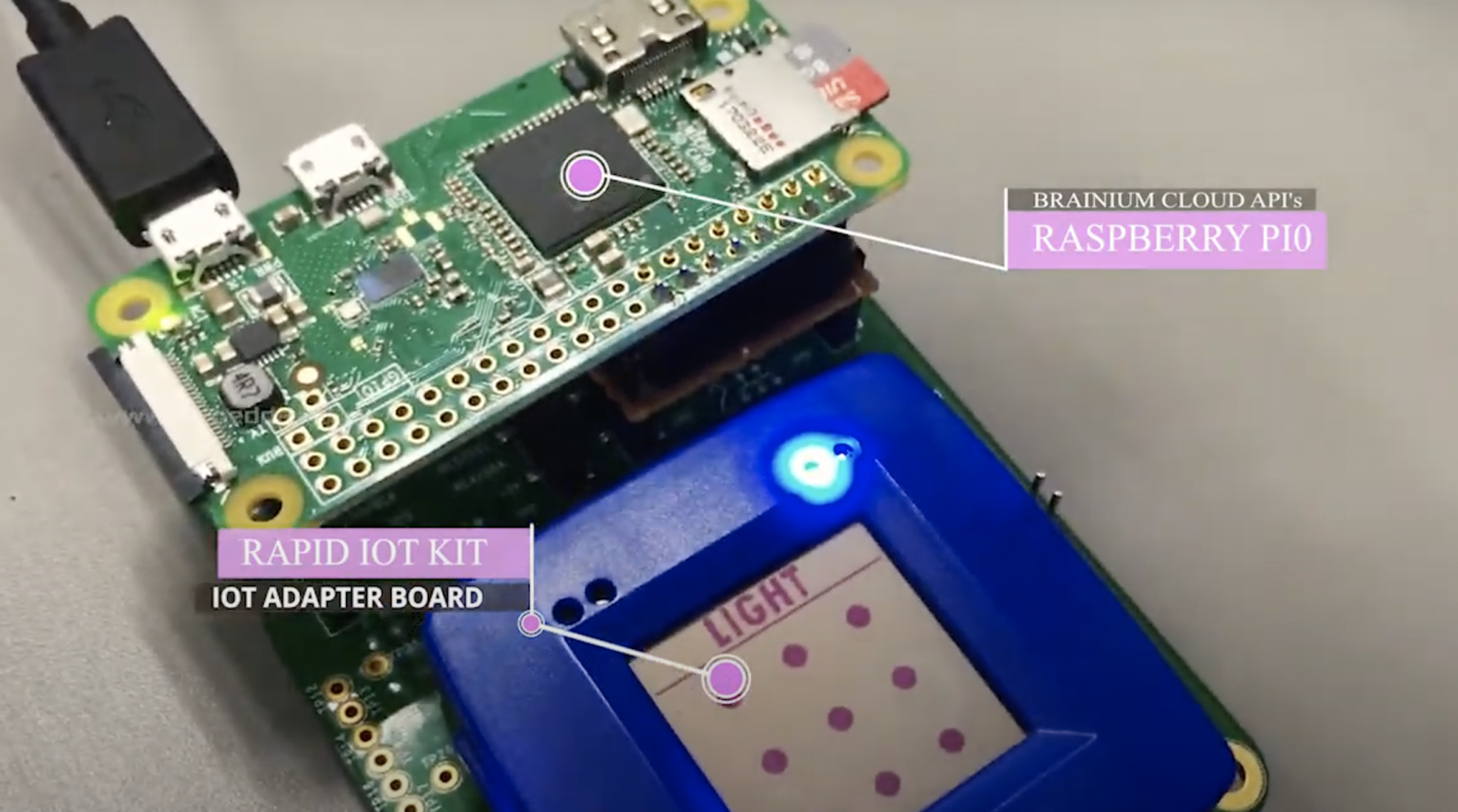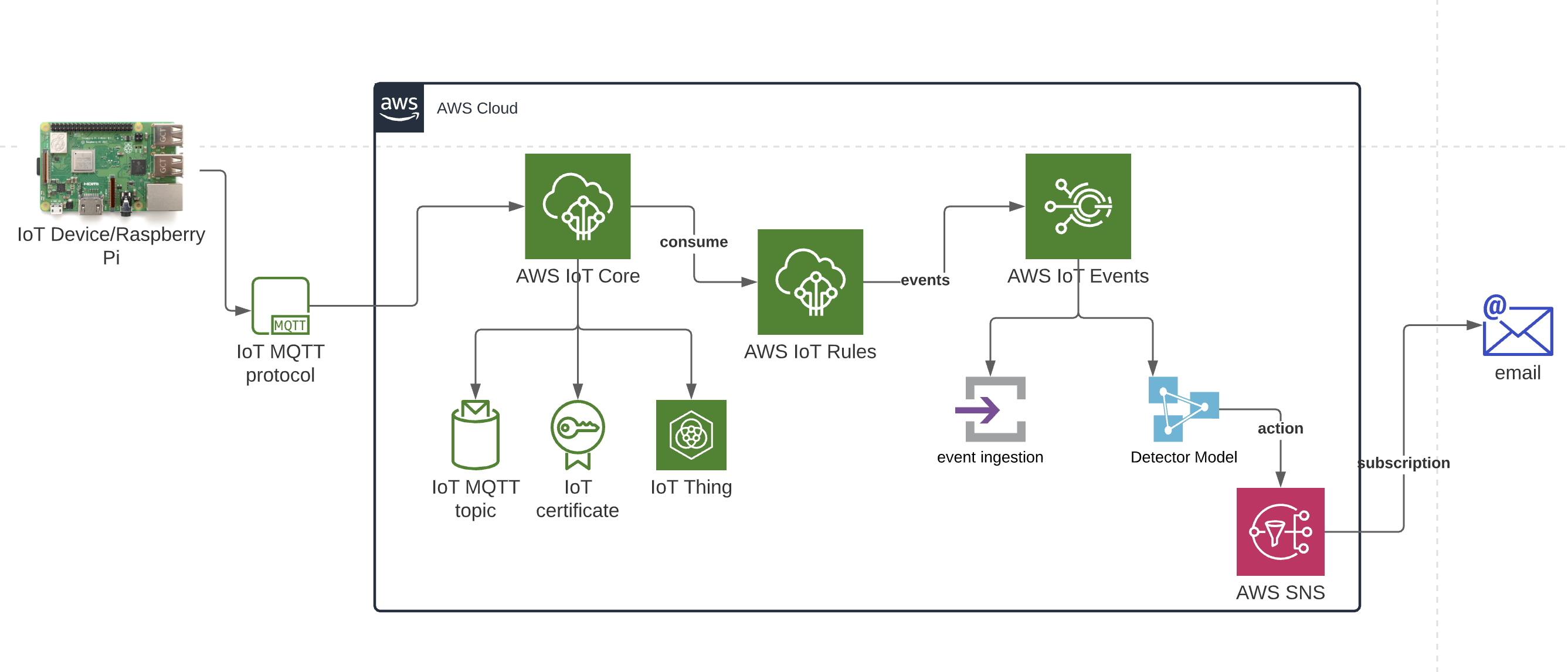Remote IoT VPC Raspberry Pi: A Comprehensive Guide For Seamless Connectivity
Detail Author:
- Name : Sean Lockman
- Username : erwin.conn
- Email : yost.mariano@gmail.com
- Birthdate : 1971-06-08
- Address : 1360 Maribel Gardens Suite 729 East Jonathon, UT 28135-8130
- Phone : +1.651.327.3286
- Company : Cummerata Ltd
- Job : Material Movers
- Bio : In porro rem consequatur est aperiam accusamus. Mollitia temporibus enim ullam repudiandae.
Socials
tiktok:
- url : https://tiktok.com/@gillianleuschke
- username : gillianleuschke
- bio : Natus quisquam voluptatem magnam dolorum.
- followers : 4150
- following : 1493
twitter:
- url : https://twitter.com/gillianleuschke
- username : gillianleuschke
- bio : Magnam labore sit qui laborum tempore. Consequatur incidunt officiis reprehenderit id eos aperiam qui. Ab officia tenetur sint labore.
- followers : 5063
- following : 132
Remote IoT VPC Raspberry Pi is a revolutionary approach to managing Internet of Things (IoT) devices through cloud-based Virtual Private Clouds (VPCs). This integration allows users to create secure, scalable, and efficient IoT ecosystems that can be managed remotely. With the growing demand for smart devices and automation, understanding how to leverage Raspberry Pi within a VPC environment is crucial for developers, businesses, and tech enthusiasts alike.
The Raspberry Pi, a compact yet powerful single-board computer, has become a cornerstone in IoT projects. Its affordability, versatility, and ease of use make it an ideal choice for deploying IoT solutions. By integrating Raspberry Pi with a Virtual Private Cloud (VPC), users can enhance security, streamline device management, and ensure seamless communication between devices. This article will explore how to set up and optimize a remote IoT VPC using Raspberry Pi while addressing key considerations for scalability and reliability.
Whether you're a beginner or an experienced developer, this guide will provide you with actionable insights into creating a robust IoT infrastructure. From setting up your Raspberry Pi to configuring a VPC, we'll cover everything you need to know to build a secure and efficient remote IoT system. Let’s dive into the details and unlock the potential of remote IoT VPC with Raspberry Pi.
Table of Contents
- Introduction to IoT and Raspberry Pi
- What is a Virtual Private Cloud (VPC)?
- Benefits of Using Raspberry Pi in IoT
- Setting Up Raspberry Pi for Remote IoT
- Configuring a VPC for IoT
- Connecting Raspberry Pi to a VPC
- Security Best Practices for Remote IoT VPC
- Scaling Your IoT Infrastructure
- Use Cases of Remote IoT VPC with Raspberry Pi
- Conclusion
Introduction to IoT and Raspberry Pi
The Internet of Things (IoT) refers to a network of interconnected devices that communicate and exchange data over the internet. These devices range from smart home appliances to industrial sensors, all designed to improve efficiency, convenience, and automation. At the heart of many IoT projects lies the Raspberry Pi, a versatile single-board computer that has gained immense popularity due to its affordability and flexibility.
Raspberry Pi is equipped with a range of features that make it ideal for IoT applications. It supports multiple programming languages, has GPIO (General Purpose Input/Output) pins for interfacing with sensors and actuators, and can run various operating systems, including Linux-based distributions. These capabilities enable developers to build custom IoT solutions tailored to their specific needs.
When combined with cloud technologies like Virtual Private Clouds (VPCs), Raspberry Pi becomes a powerful tool for managing remote IoT devices. VPCs provide a secure and isolated environment within the cloud, ensuring that data transmitted between devices remains private and protected. This integration allows users to monitor, control, and analyze IoT devices from anywhere in the world, making it a game-changer for industries such as healthcare, agriculture, and smart cities.
What is a Virtual Private Cloud (VPC)?
A Virtual Private Cloud (VPC) is a secure and isolated private cloud hosted within a public cloud infrastructure. It allows users to create a virtual network environment where they can deploy resources such as servers, databases, and applications. VPCs are widely used in IoT projects because they offer enhanced security, scalability, and control over network configurations.
One of the key advantages of using a VPC is its ability to segment resources and control access. For example, you can configure subnets, route tables, and network gateways to ensure that only authorized devices can communicate with your IoT infrastructure. This level of customization is essential for protecting sensitive data and preventing unauthorized access.
VPCs also provide flexibility in terms of scalability. As your IoT project grows, you can easily add more devices, increase storage capacity, or allocate additional computing resources without worrying about physical hardware limitations. This makes VPCs an ideal choice for businesses looking to expand their IoT operations while maintaining high performance and reliability.
Benefits of Using Raspberry Pi in IoT
Raspberry Pi offers numerous advantages that make it a preferred choice for IoT projects. Below are some of the key benefits:
- Cost-Effectiveness: Raspberry Pi is an affordable solution compared to traditional computing hardware, making it accessible for small-scale projects and startups.
- Compact Design: Its small form factor allows it to be deployed in space-constrained environments, such as embedded systems or remote locations.
- Versatility: With support for multiple programming languages and operating systems, Raspberry Pi can be customized to suit various IoT applications.
- Community Support: The Raspberry Pi community is vast and active, providing a wealth of tutorials, forums, and resources to help users troubleshoot issues and share ideas.
- GPIO Pins: These pins enable direct interaction with external devices, making it easy to connect sensors, cameras, and other peripherals.
By leveraging these features, developers can create innovative IoT solutions that address real-world challenges. For instance, Raspberry Pi can be used to monitor environmental conditions in agriculture, automate home appliances, or even track inventory in retail settings.
Setting Up Raspberry Pi for Remote IoT
Before integrating Raspberry Pi into a VPC, it’s essential to set it up correctly for remote IoT operations. Follow these steps to prepare your Raspberry Pi:
1. Install the Operating System
Download and install a compatible operating system, such as Raspberry Pi OS or Ubuntu Server. Use tools like Raspberry Pi Imager to flash the OS onto an SD card.
2. Configure Network Settings
Ensure your Raspberry Pi is connected to the internet via Wi-Fi or Ethernet. Update the network configuration files to enable static IP addressing if needed.
3. Enable SSH Access
Enable Secure Shell (SSH) to allow remote access to your Raspberry Pi. This can be done through the Raspberry Pi Configuration tool or by creating an empty file named "ssh" in the boot directory.
4. Install Required Software
Install software packages such as Python, Node.js, or MQTT libraries depending on your project requirements. These tools will facilitate communication between your Raspberry Pi and other IoT devices.
5. Test Connectivity
Verify that your Raspberry Pi can communicate with other devices on the same network. Use tools like ping or traceroute to troubleshoot any connectivity issues.
By following these steps, you’ll have a fully functional Raspberry Pi ready to integrate into your remote IoT VPC setup.
Configuring a VPC for IoT
Configuring a VPC for IoT involves several steps to ensure optimal performance and security. Below is a step-by-step guide to help you get started:
1. Define Network Architecture
Plan your VPC architecture by defining subnets, availability zones, and routing tables. Consider separating public-facing resources from private ones to enhance security.
2. Set Up Security Groups
Create security groups to control inbound and outbound traffic. For example, allow SSH access only from trusted IP addresses and restrict HTTP/HTTPS traffic to specific ports.
3. Configure NAT Gateway
Use a NAT (Network Address Translation) gateway to enable private instances within your VPC to access the internet without exposing them to external threats.
4. Enable VPC Peering
If you have multiple VPCs, enable VPC peering to allow seamless communication between them. This is particularly useful for large-scale IoT deployments.
5. Monitor and Optimize
Use monitoring tools like AWS CloudWatch or Google Cloud Monitoring to track performance metrics and identify potential bottlenecks. Optimize your VPC configuration based on these insights.
A well-configured VPC lays the foundation for a secure and efficient IoT infrastructure, ensuring smooth communication between devices and centralized management.
Connecting Raspberry Pi to a VPC
Connecting your Raspberry Pi to a VPC requires careful planning and execution. Below are the key steps involved:
1. Establish a Secure Connection
Use a VPN (Virtual Private Network) or SSH tunneling to establish a secure connection between your Raspberry Pi and the VPC. This ensures that all data transmitted remains encrypted and protected.
2. Configure Routing
Set up routing rules to direct traffic between your Raspberry Pi and the VPC. Update the route tables in your VPC to include the IP address of your Raspberry Pi.
3. Test Communication
Verify that your Raspberry Pi can communicate with other devices within the VPC. Use tools like ping or traceroute to troubleshoot any issues.
4. Automate Processes
Implement automation scripts to streamline tasks such as device provisioning, data collection, and firmware updates. Tools like Ansible or Terraform can be used for this purpose.
By following these steps, you can seamlessly integrate your Raspberry Pi into a VPC, enabling remote management and monitoring of IoT devices.
Security Best Practices for Remote IoT VPC
Security is a critical aspect of any IoT deployment, especially when using a remote VPC. Below are some best practices to enhance the security of your IoT infrastructure:
- Use Strong Authentication: Implement multi-factor authentication (MFA) for accessing your VPC and Raspberry Pi.
- Encrypt Data: Use encryption protocols such as TLS/SSL to protect data in transit and at rest.
- Regular Updates: Keep your Raspberry Pi and VPC software up to date with the latest security patches.
- Limit Access: Restrict access to your VPC and IoT devices to only those who need it.
- Monitor Activity: Use logging and monitoring tools to detect and respond to suspicious activities promptly.
By adhering to these practices, you can minimize the risk of cyberattacks and ensure the integrity of your IoT ecosystem.
Scaling Your IoT Infrastructure
As your IoT project grows, scaling your infrastructure becomes essential. Here are some strategies to consider:
1. Use Auto-Scaling
Implement auto-scaling policies to dynamically adjust resources based on demand. This ensures that your IoT system remains responsive during peak usage periods.
2. Leverage Edge Computing
Deploy edge devices to process data locally, reducing latency and bandwidth usage. Raspberry Pi can serve as an edge node in your IoT network.
3. Optimize Data Storage
Use cloud storage solutions to store and analyze large volumes of IoT data. Tools like Amazon S3 or Google Cloud Storage are ideal for this purpose.
4. Automate Deployment
Use containerization and orchestration tools like Docker and Kubernetes to automate the deployment and management of IoT applications.
By adopting these strategies, you can ensure that your IoT infrastructure remains scalable, efficient, and future-proof.
Use Cases of Remote IoT VPC with Raspberry Pi
The integration of Raspberry Pi with a VPC opens up numerous possibilities for IoT applications. Below are some notable use cases:
- Smart Agriculture: Monitor soil moisture, temperature, and humidity using sensors connected to Raspberry Pi. Transmit data to a VPC for analysis and decision-making.
- Home Automation: Control smart home devices such as lights, thermostats, and security cameras remotely via a VPC.
- Industrial IoT: Track machine performance and predict maintenance needs by collecting data from industrial sensors and analyzing it in a VPC.
- Healthcare Monitoring: Use Raspberry Pi to collect patient data from wearable devices and transmit it securely to a VPC for real-time monitoring.
- Smart Cities: Deploy Raspberry Pi-based systems to monitor traffic, air quality, and energy consumption in urban areas

